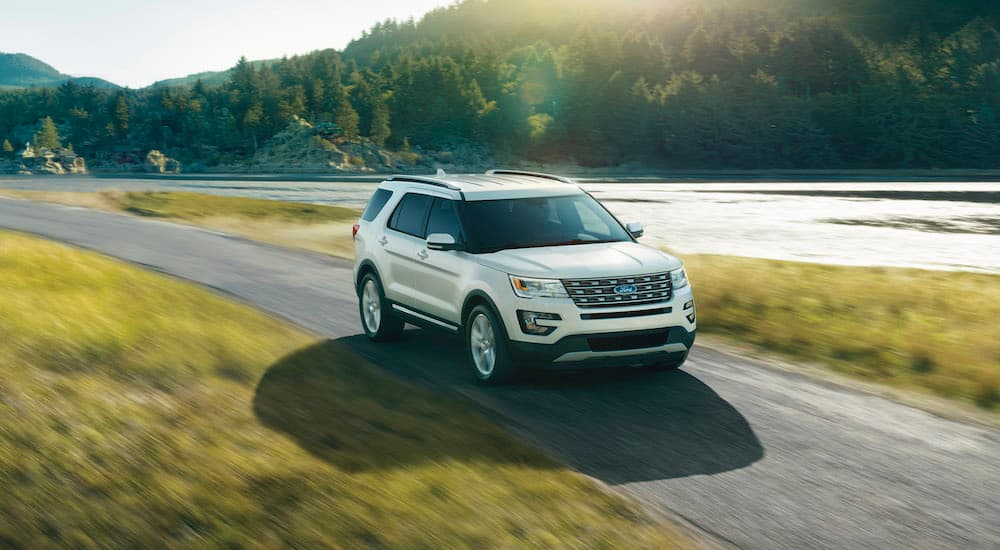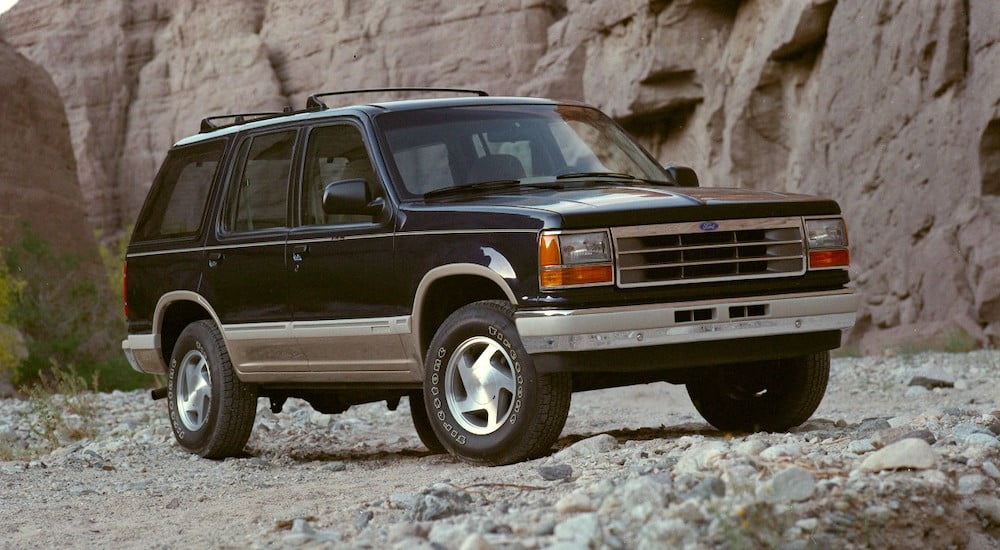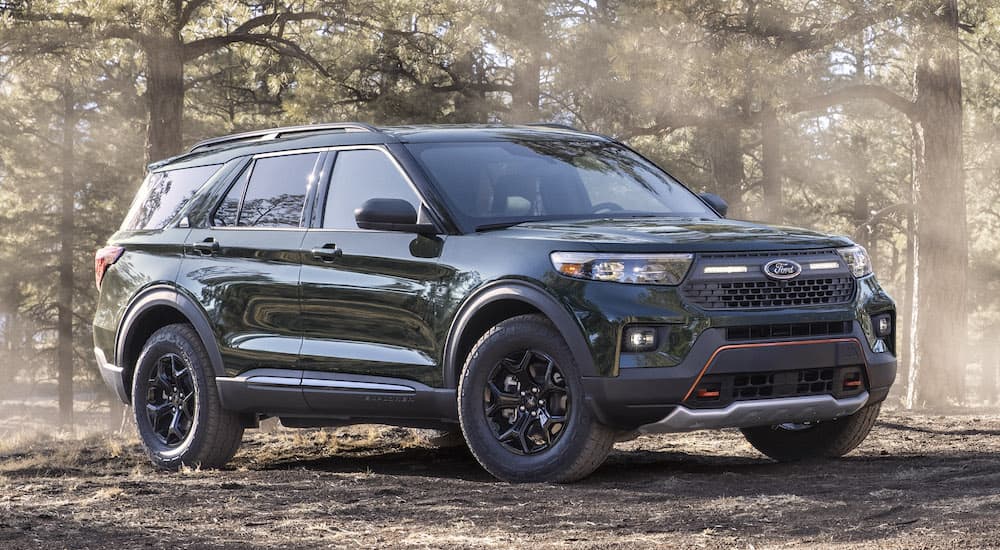We live in a world full of SUV options. Ford offers eight SUV models in its 2022 lineup and only one car. There’s no doubt that SUVs are continuously in demand. Drivers who need more cargo space, more seating, or a taller vehicle with greater road visibility all flock to SUVs for a vehicle they know will be safe and reliable, regardless of whether they never leave the pavement or gravitate towards the trails. With so many options available, it may seem strange that drivers continue to flock to their local Ford Explorer dealer. What can it be that makes the Explorer such a desirable vehicle?
Since its release in 1991, the Ford Explorer has been the type of vehicle that appeals to a certain type of driver. However, as driving functionality and convenience features have developed over the past decades, so too has the public appetite for a vehicle with the stature and capability of the Ford Explorer. Indeed, Ford has made the Explorer more accessible for a wider crowd of drivers over the years, creating a vehicle that delivers many of the things today’s drivers want to enjoy. Why is the Ford Explorer so highly desired? Perhaps the answer lies in its ability to deliver exactly what drivers need.
The Early Ford Explorer
Many drivers refer to the 1990s as the start of the “SUV Boom.” In fact, it seemed like a lot of rough and rugged brands were being domesticated in order to create the Sport Utility––or Suburban Utility, as many joked––Vehicle that would soon dominate the roadways.
To keep up with rivals like the Jeep Grand Cherokee and Chevy S-10 Blazer, Ford replaced the Bronco II with the 1991 Ford Explorer. Built on the Ford Ranger pickup truck frame, the Explorer demonstrated its family-friendly vision by offering both two-door and four-door models. Rear-wheel drive was standard, with optional four-wheel drive available for the more adventurous. The 4.0L V6 under the hood managed 160 hp at most and was paired with a four-speed automatic or five-speed manual transmission.
While initial descriptions of the interior do not sound luxurious by current standards, upon its arrival on the market in 1991, the features of the early Explorer were considered top-of-the-line. Among included features in the 1991 Eddie Bauer Special Edition are a cassette player with tape storage space and power-adjustable seats.
However, there was something about the new Ford Explorer that appealed to the suburban driver. It was similar in size to a minivan, with up to 82 cu.ft. of cargo space when the rear seats were folded, but it was more daring. The taller wheels, the option of four-wheel drive, and the absence of obnoxious sliding doors made the Explorer seem like the minivan’s wild brother. It wasn’t an off-road vehicle, a work truck, or a boardroom-ready sedan, but it could do the job of all three while looking super cool and rugged.
A Breathtaking Series of Reintroductions
The Explorer experienced a slight shift in its third generation. Leaving the Ranger’s frame behind, the 2002 Ford Explorer was redesigned to accommodate up to seven passengers with an optional third row of seats. The width and wheelbase grew, and the torsion strength of the new frame increased 3.5 times over the previous Ranger frame. That made the Explorer tougher, while an updated suspension system made it more nimble.
As an added bonus, cassette players were replaced by CD players across much of the 2002 Explorer lineup, and features such as leather upholstery, power-adjustable heated seating, and a digital compass with an outdoor temperature gauge demonstrated that the Explorer was heading in a different direction. This increasing emphasis on luxury was a hit with drivers everywhere.
The 2011 Explorer started the fifth generation with a major redesign, including moving to a unibody chassis shared with the Ford Taurus sedan. However, the Explorer also got longer and wider this generation, stretching to provide an even roomier third-row seat. It was in this refreshed Explorer that technology became more of a centerpiece, including Sync, MyFord Touch, and MyKey––a series of features that helped drivers access their vehicles in a time when smartphones were still a fairly recent concept.
With these changes came concerns. Some drivers felt the 2.0L four-cylinder wasn’t powerful enough and found the infotainment system clunky and lacking. Ford refreshed the fifth generation with the 2016 Explorer, which gained a 2.3L turbocharged engine that provided the big SUV with 280 hp and 310 lb-ft of torque. It was bigger, wider, more powerful, and up to date with the latest technology, but its front-wheel drive platform was still criticized by many fans of the old Explorer.
The Ford Explorer Today
The 2020 Explorer debuted to great fanfare with the announcement that it had switched to a purpose-built rear-wheel drive platform. Was it a Hail Mary attempt at reviving the nameplate, or did the Explorer finally find its true meaning in life? The jury is still out, but many experts claim the sixth generation is the Explorer as it was meant to be, and the surge in sales after 2020 would seem to validate that option.
With a towing capacity of 5,600 lbs, 8.7 inches of ground clearance, and 87.8 cu.ft. of cargo space with the rear seats stowed, the 2022 Explorer is clearly an exceptionally capable SUV. Drivers have a choice between two turbocharged engines and one hybrid option. The 2.3L turbocharged I-4 remains the standard engine on most trims, providing 300 hp and 310 lb-ft of torque. The 3.0L twin-turbocharged V6 comes standard on the ST, King Ranch, and Platinum trims, taking those figures up to 400 hp and 415 lb-ft of torque. Finally, the 3.3L V6 hybrid is good for 318 hp and 322 lb-ft torque, making it a mighty option that happens to sip gasoline instead of drinking heartily.
Shopping for a Ford Explorer
Why do drivers keep coming back to their Ford Explorer dealer? Perhaps it’s because the Ford Explorer has been a constant companion for a generation of drivers. It could also be because the Explorer has managed to reinvent itself in meaningful ways at exactly the right time, or that Ford has given this vehicle just the right combination of features, power, and options so that drivers can find an SUV that fits their lifestyle perfectly.
Most likely, all of these factors are true to varying degrees with the hundreds of thousands of drivers who choose the Ford Explorer every year. The Explorer continues to be a bestseller, a trusted nameplate, and a vehicle that drivers know they can depend upon. With careful attention to driver needs and wants, Ford has managed to design this seven-passenger SUV to meet the demands of the masses.
There are many reasons to enjoy the Ford Explorer, whether it’s the expansive cargo space, comfortable seating, or capable engines. With its massive interior and easily configurable seating arrangements, the Ford Explorer offers options that can appeal to a vast array of drivers––as it has since 1991.






